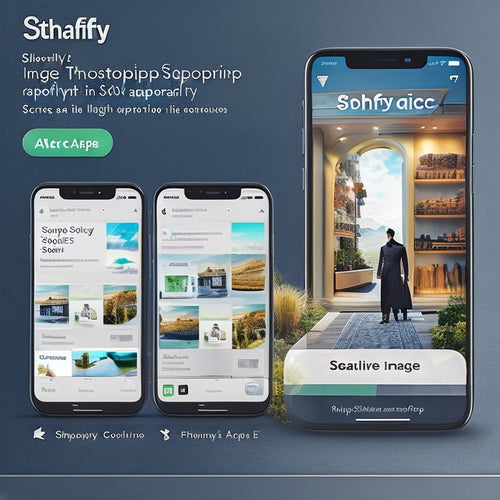What's Holding Back Your Online Learning Empire?
Share
You've poured your heart into creating excellent online courses, but your online learning empire isn't growing as expected. Chances are, one of five common constraints is holding you back. Is your infrastructure unable to keep up with your growing student base, leading to slow websites and frustrated students? Or maybe your course delivery system is outdated, causing login issues and student isolation? Perhaps manual enrollment and payment processes are draining your time and energy. You might be struggling to engage students or lacking the insights to improve course design. Identify and overcome these obstacles, and you'll open up the full potential of your online learning empire.
Key Takeaways
• Outdated infrastructure and limited resources hinder online course demand, causing frustration and damaging reputation.
• Inefficient course delivery systems lead to poor student engagement, low completion rates, and a one-size-fits-all approach.
• Manual enrollment and payment processes waste time, overshadow revenue-driving activities, and lead to paperwork frustration.
• Insufficient student engagement tools result in low motivation, high drop-off rates, and a lack of interactive content.
• Inadequate performance analytics make it difficult to identify areas for improvement, refine course design, and predict student outcomes.
Lack of Scalable Infrastructure
As you build your online learning empire, you'll quickly realize that your infrastructure needs to grow with your student base, but if you haven't planned for scalability, your website, servers, and tools will become overwhelmed, hindering your ability to deliver courses and ultimately, stunting your growth.
You'll be faced with limited resources, struggling to keep up with the demand for your courses. Your website will slow down, and your students will become frustrated with the lack of accessibility. This will lead to slow growth, as you'll be unable to take on new students or offer new courses. Your reputation will suffer, and your competition will take advantage of your weaknesses.
To avoid this, planning for scalability from the start is crucial. This means investing in cloud-based infrastructure, load testing your website, and having a plan in place for when your student base surges.
Inefficient Course Delivery Systems
You're likely pouring your heart and soul into creating high-quality courses, but if your delivery system is inefficient, it's like building a beautiful house on shaky ground - it won't matter how great the content is if students can't access it seamlessly.
Outdated technology can lead to frustrating login issues, slow loading times, and poor video quality, causing students to lose interest and momentum. Ineffective communication can also hinder the learning experience, leaving students feeling isolated and unsupported.
Moreover, limited customization options can make it difficult to tailor your courses to your students' unique needs and learning styles. Rigid processes can stifle innovation and prevent you from adapting to changing student needs. This can result in a one-size-fits-all approach that fails to engage students and ultimately affects course completion rates.
Manual Enrollment and Payment
Your manual enrollment and payment processes are likely draining your time and energy, forcing you to focus on administrative tasks instead of high-leverage activities that drive growth and revenue. You're stuck managing paperwork, chasing payments, and dealing with frustrated students who can't access your courses.
It's a vicious cycle that's holding you back from scaling your online learning empire.
It's time to break free from these inefficient processes and embrace automation. By implementing automated registration and streamlined payments, you can eliminate the paperwork and focus on what matters most - creating high-quality content and growing your business.
With self-paced enrollment and digital transactions, your students can seamlessly register and access your courses, while you can track their progress and receive payments effortlessly. This shift won't only save you time and energy but also provide a better learning experience for your students.
Insufficient Student Engagement Tools
Draining student engagement is a major obstacle standing in the way of your online learning empire's success, and it's likely due to your lack of effective tools to keep students motivated and invested in their learning journey.
You're not alone in this struggle, but it's time to take action. Without the right tools, you're leaving your students to navigate dry, static content that fails to capture their attention.
It's time to level up your engagement strategy with interactive content that sparks curiosity and encourages participation. Think gamification techniques like points, badges, and leaderboards that tap into students' competitive spirits.
These tools can revolutionize the way your students interact with your course material, making it more enjoyable and increasing their chances of success. By incorporating these engagement-boosting strategies, you'll see a significant increase in student motivation and a decrease in drop-off rates.
It's time to stop letting student disengagement hold you back and start building an online learning empire that truly empowers.
Inadequate Performance Analytics
Without a clear picture of student performance, you're flying blind, leaving unanswered questions about what's working and what's not in your online course. You can't identify areas that need improvement, and you're missing opportunities to optimize your content and instruction. That's where inadequate performance analytics come in – a major roadblock to building a successful online learning empire.
You need data visualization tools that provide a clear, concise, and actionable view of student performance. This enables you to pinpoint areas of strength and weakness, track progress, and make data-driven decisions. But that's not all – you also need predictive analytics to forecast student outcomes, identify at-risk students, and develop targeted interventions.
With these insights, you can refine your course design, adjust your instructional strategies, and create a more effective learning environment.
Don't let inadequate performance analytics hold you back. Invest in the right tools and technologies to gain a deeper understanding of your students' needs and preferences. By doing so, you'll be able to create a more engaging, personalized, and effective online learning experience that drives real results.
Frequently Asked Questions
How Do I Protect My Online Course From Piracy and Copyright Infringement?
You cleverly safeguard your intellectual property by implementing robust copyright protection measures, such as watermarked content and secure login systems, to prevent piracy and guarantee your online course remains an exclusive, high-value offering.
Can I Use a Single Platform for Both Online and Offline Learning?
You can absolutely use a single platform for both online and offline learning, embracing a blending learning or hybrid approach that combines the best of both worlds, offering flexibility and consistency for your learners.
What's the Ideal Length for Online Course Video Lessons?
"Imagine learners' eyes glazing over like a frozen computer screen. To avoid this, you're wise to keep online course video lessons concise, using engagement strategies to captivate their attention spans, and clever video editing for seamless content delivery."
How Do I Handle Refunds and Chargebacks for Online Courses?
You'll want to establish a clear refund process, outlining eligibility and timelines, while implementing chargeback prevention strategies like verifying customer info and providing excellent support to reduce disputes and minimize financial losses.
Are Online Learning Platforms Compatible With All Devices and Browsers?
You'll want to confirm your online learning platform boasts cross-platform compatibility, but be aware that browser limitations can occur, so test thoroughly to guarantee seamless access on various devices and browsers.
Related Posts
-
Measuring the Impact of TikTok on Your Shopify Sales
TikTok has become a cultural phenomenon, captivating millions of users with its short-form videos. For e-commerce bu...
-

Why Online Learning Platforms Elevate Customer Support
By integrating online learning platforms, you can revolutionize your customer support strategy, providing personalize...
-

Essential SEO Apps for Shopify: Boost Your Store's Visibility
This article explores the significance of SEO apps for Shopify stores in enhancing visibility and ranking in search ...

